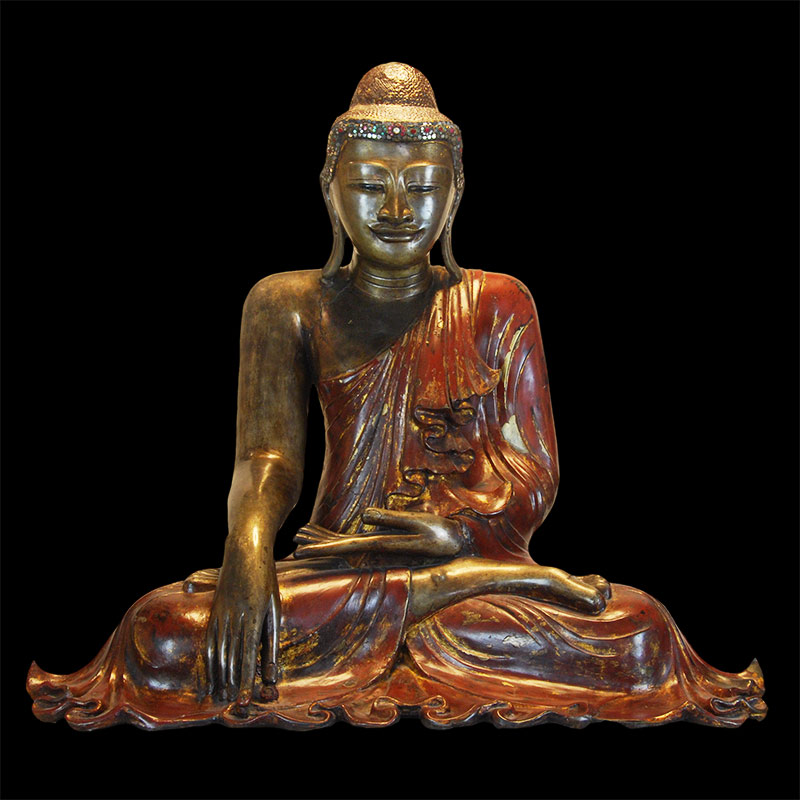Buddha 佛像
bronze with lacquer, gilding, and glass 覆以玻璃嵌玻璃彩漆, 19th century, Burma 緬甸
Donated to the museum by Drs. Edmund and Julie Lewis.
cat# 16031
This Buddha form is associated with Mandalay in the late 19th century. The Buddha was originally covered with lacquer and then gilded. The hands of the Buddha are in the earth touching mudra. The Buddha is calling on the earth to bear witness, while his legs are in the diamond or lotus position.
In Buddhism the image of the Buddha is treated as if it were the Buddha himself. The head of this Buddha once had a crown than was topped by a tall pinnacle: the Buddha in his headdress is referred to as the "crowned and adorned" image. There are remainders of the glass inserts on the headband that are supposed to resemble jewels. The crowned Buddha image is rather particular to Burma and Thailand where it is connected to a 16th century tale in which the Buddha assumed the appearance of a magnificent "Supreme King of Kings" in order to subdue a proud earthly king.
這尊佛像和19世紀晚期的曼德勒緊密相關。佛像首先被噴漆,然後鍍金。佛像的手正在用一種宗教禮儀中特有的手勢觸摸大地,他正在召喚大地為他作證,他的腿擺成鑽石也像是蓮花的的形狀。在佛教文化中,佛的形象被視為是佛本身。佛像曾經頭戴王冠,而不是一個高高的塔頂一樣的裝飾:佩戴頭飾的佛像被稱為加冕及裝飾后的形象。在他的頭帶上面還有一些玻璃鑲嵌物的殘留,那些地方本應該裝有珠寶。加冕的佛像在緬甸和泰國更加特殊,因為他們和16世紀的一個故事相關聯,故事講述了佛祖假裝成一個偉大的“王中之王”來制服一個在人間十分高傲的皇帝。
